Ever have somebody tell you “we have filtered water in the fridge,” then out comes a Brita-style pitcher?
I have. Time and again. So the other day I decided I’d test how well those pitcher filters actually work, when compared to a few other options I had in the house.
First, I chose the 5 sources of water to test:
The set up was then pretty simple. I needed 5 sample cups, each cleaned and then rinsed out with RO water, which I assumed would be the cleanest from a Total Dissolved Solids (TDS) perspective.
The tool I would be using to measure the TDS level of the water was a simple meter with two electrodes, which would measure resistivity of the water and back-calculated a TDS-content value for each sample.
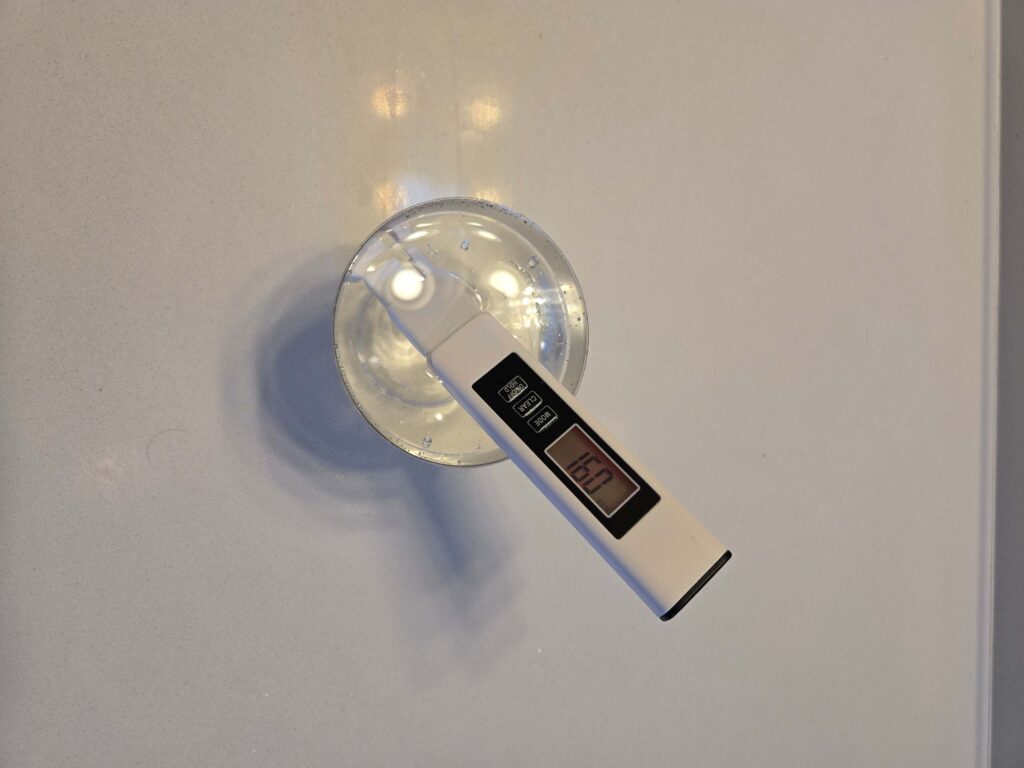
I started by flushing each of the filters. This meant I ran at least 2 gallons through each to remove any loose solids buildup.
Then I took a sample from each of the 5 sources, covered the sample cups with aluminum foil, and allowed all of the samples to sit out for about 1 hour to come to room temperature (~70 degrees F).
Once the temperatures normalized, I tested each with the TDS meter, rinsing it with RO water in between each sampling.
I then repeated this sampling and testing process 2 additional times for each water source, to make certain I was getting consistent results.
So here is what I found…
This water came directly from the city, with no filtering other than the standard faucet screen/aerator. I expected this water to have the highest levels of TDS, and, well, I was pretty much spot on.
The tests ranged from 165-177 ppm (parts per million).
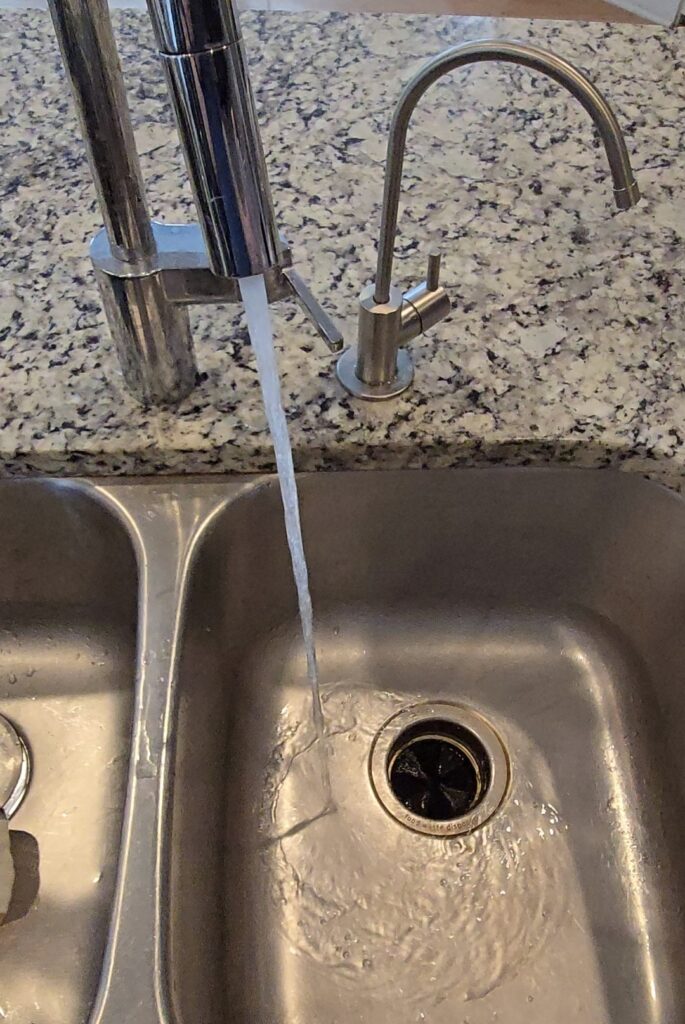
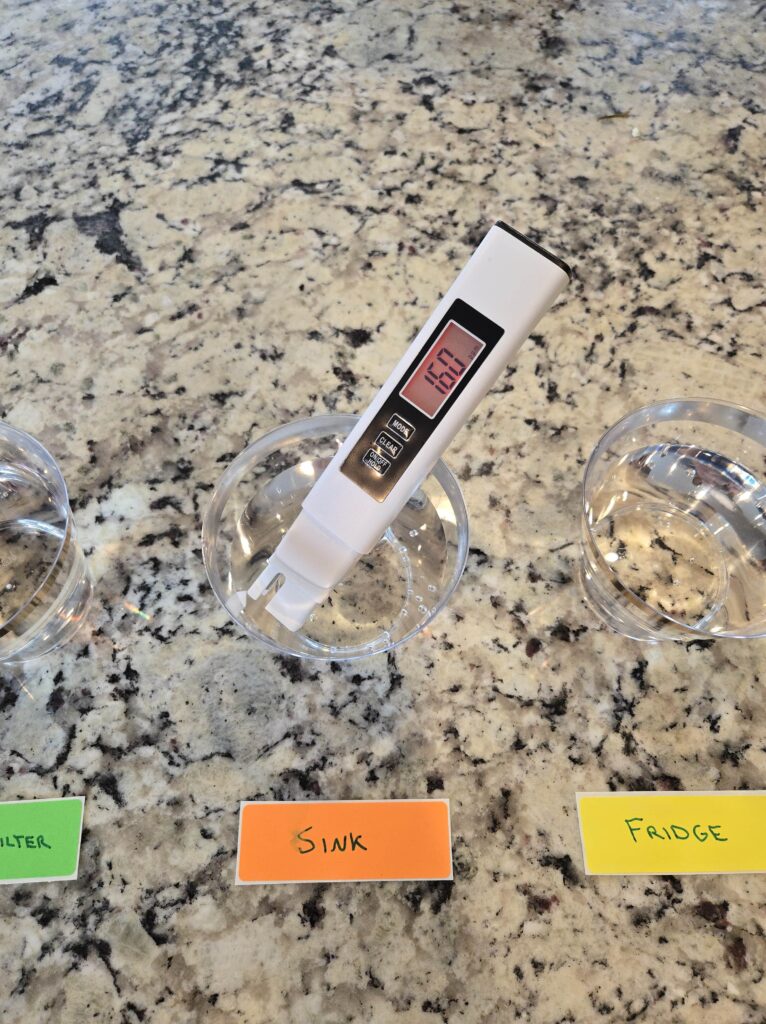
Pitcher filters don’t do much. Just in general. Most have just carbon filters, which are used mostly just to enhance water taste/flavor by removing chlorine ions.
So I didn’t expect much. And in fact got even less than that.
The results of each of the pitcher filter samples suggested that this filter had actual increased the TDS content of the water. The readings ranged from 170 ppm to 180 ppm.
Despite having rinsed this filter thoroughly and run a couple of gallons through it to remove any build up, I was still getting reading just slightly higher than water straight from the sink faucet.
Likely this can still be attributed to solids buildup in the filter, but it is worrisome that it doesn’t clear out quickly as most other filters seem to.

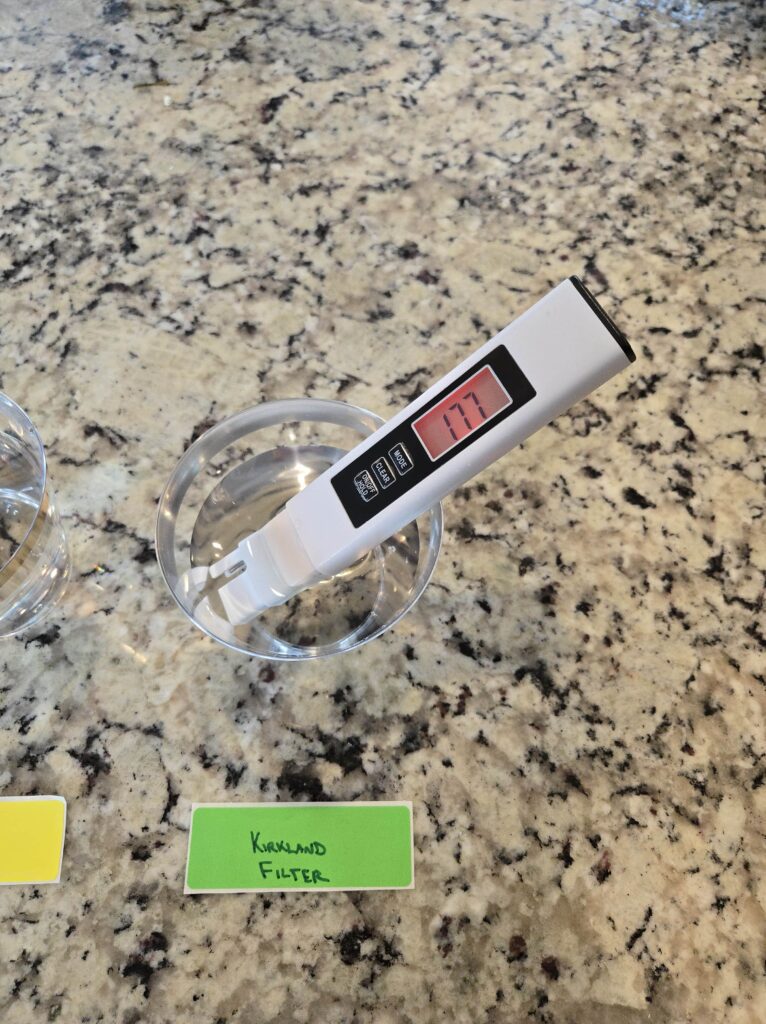
Refrigerators typically use the same type of filters as pitchers: carbon. Again, these mostly target chlorine and large sediment, and can improve water taste.
So, again, I didn’t have high expectations. The results seemed slightly better than the pitcher filter however.
The TDS measured between 150 ppm and 160 ppm across the 3 samples. Better than the faucet direct and the pitcher filter, but not by much. Only about 6% removal.

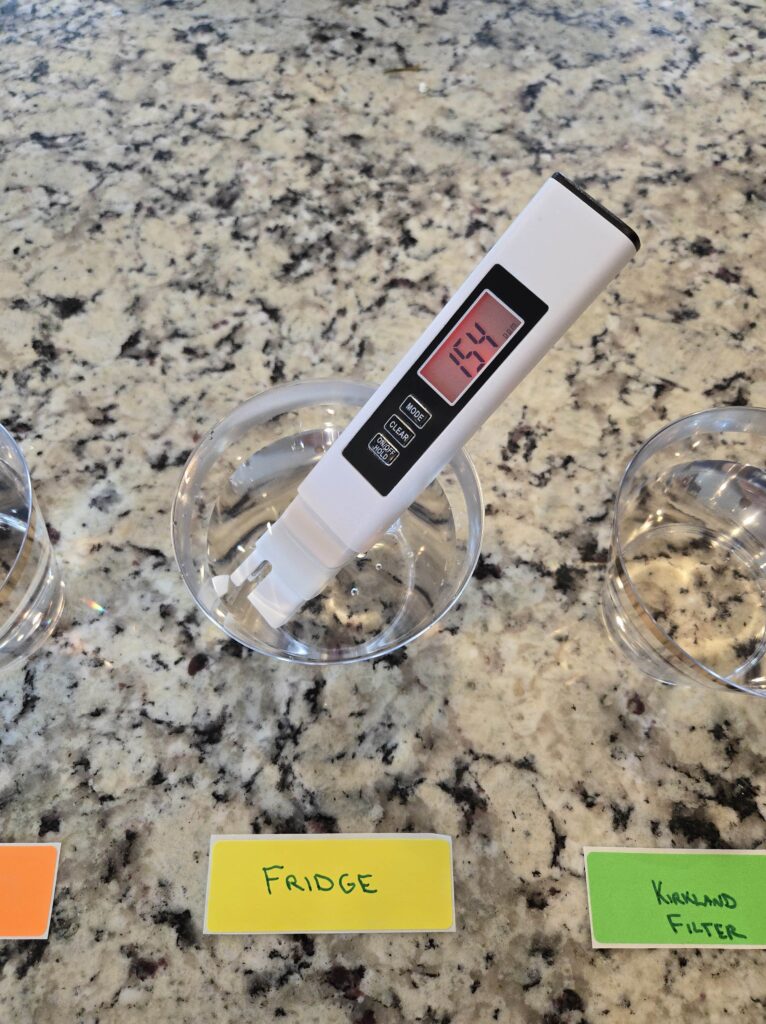
These are the Cadillacs of water filters. They remove up to 99.9% of both organic and inorganic water contaminants. This means dissolved solids, metals, PFAS, pesticides, viruses, and bacteria.
In fact, many of these RO filter systems are so effective at removing contaminants from the water that they get paired with remineralization filters, which add back a little bit of calcium, magnesium, sodium, potassium, and zinc.
This improves the taste of the water dramatically – seriously, just take my word for it on that – and helps your body get healthy amounts of these minerals.
So, naturally, this filter performed MUCH better than the others tested.
The samples tested between 20 and 25 ppm! Mind you, these samples were taken after remineralization.
Fortunately, this is my daily drinking and cooking water, so I’m feeling pret-ty good about myself right now.
If you’re interested, this is the exact RO system I have.
And here is a more detailed review.
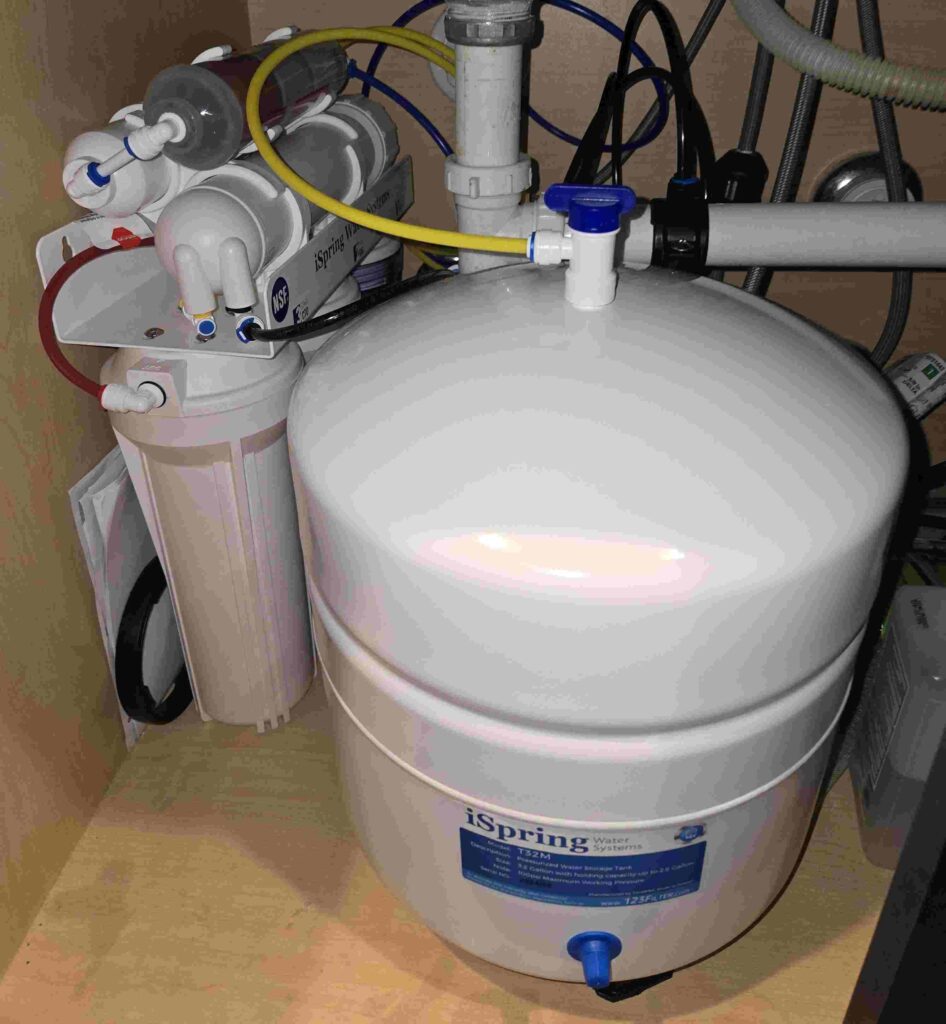
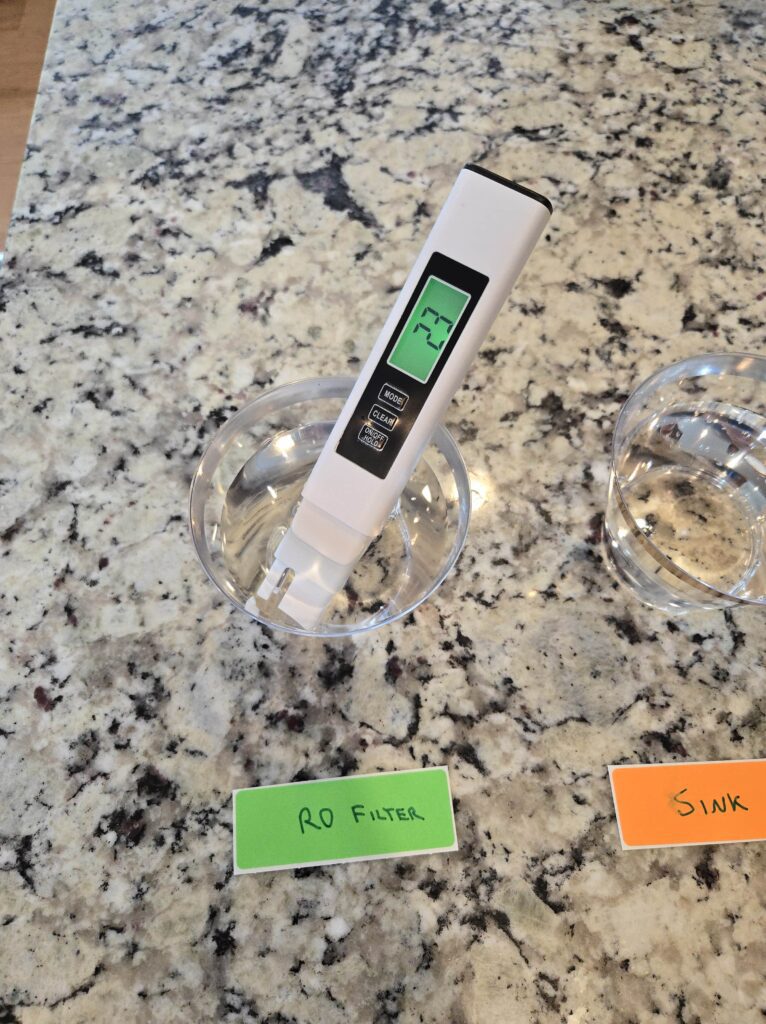
This was slightly surprising to me. I always expected bottled water to have very elevated chlorine levels, considering it is mass-produced and they want to maintain sterility (getting consumers sick off your product is a big No).
However, the results showed quite the opposite. The bottled water was the second cleanest sample of the 5 sources tested. It ran between 25 and 35 ppm, making it almost as clear as the RO system, *from a Total Dissolved Solids* perspective only.
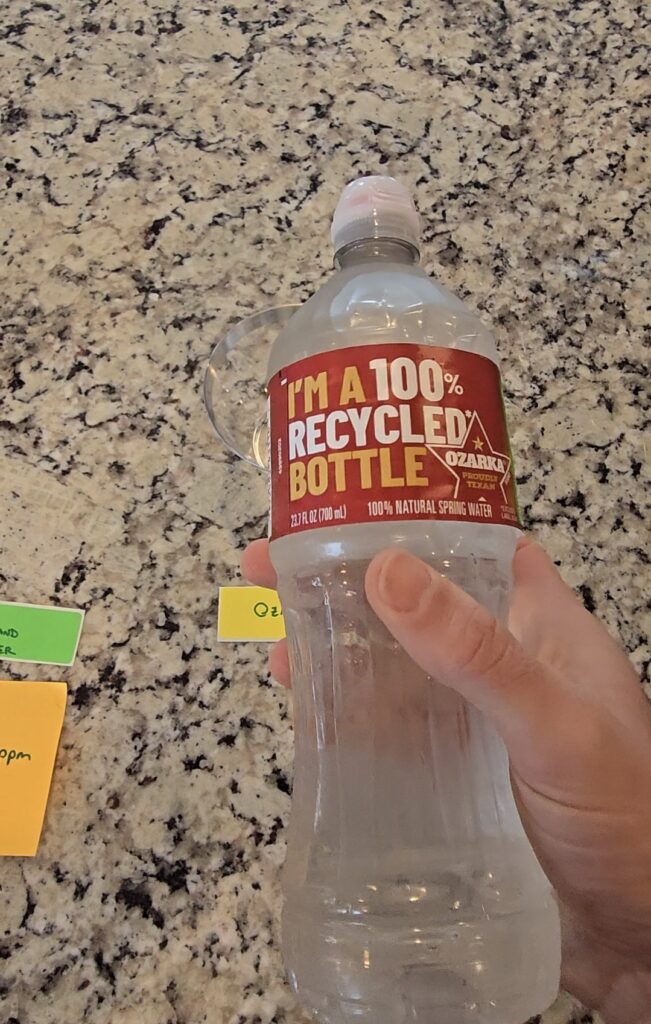
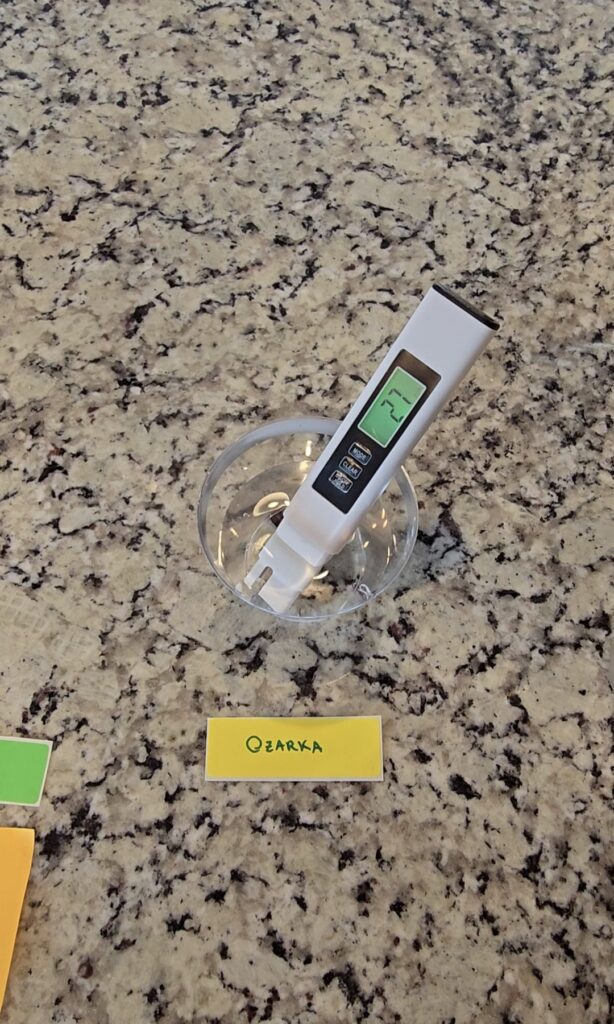
As I’ve covered in other posts, you really ought to just bite the bullet and get an under sink RO system for your home. Nothing else compares, or even comes close, when it comes to filter efficacy.
It is probably important to put out this reminder right now however: TDS meters will not provide an estimate of leached plastic derivatives such as PFAS.
I say this to point out that just because the total dissolved solids tested very low for the bottled water, does not mean that everybody should switch over to plastic bottles. In fact, I would recommend against it.
But do feel free to toss out your Brita filter. It isn’t doing anything, other than maybe making you feel better. Which I guess, actually, is something.
So maybe keep it. But upgrade as soon as you can to an RO system.
Just to summarize the results:
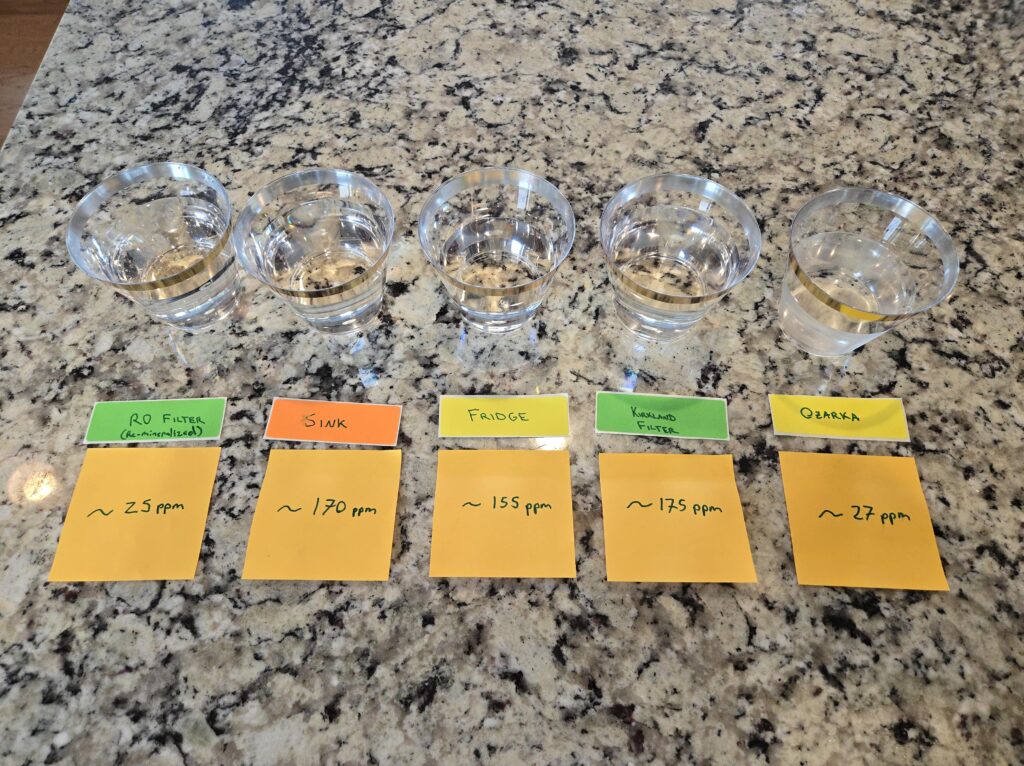
I anticipate doing further lab testing in the near future which hopefully will address other contaminants, but for now, I will point you to our resources page which includes links to organizations such as EWG, where you can check the results of your local water for free online.
And for other interesting articles or write-ups, check out our Water Quality page.
